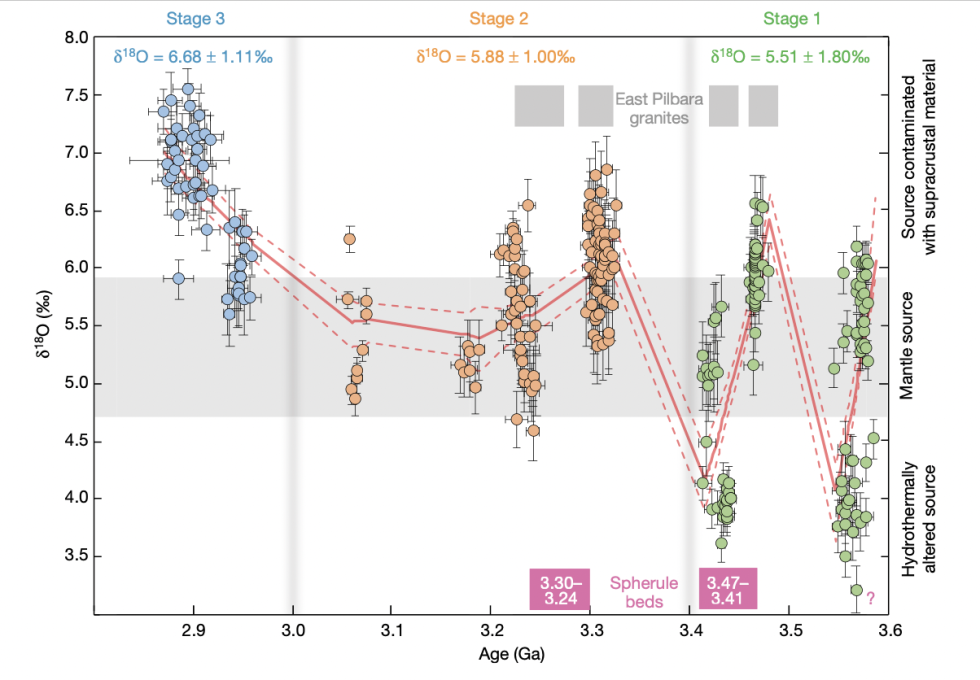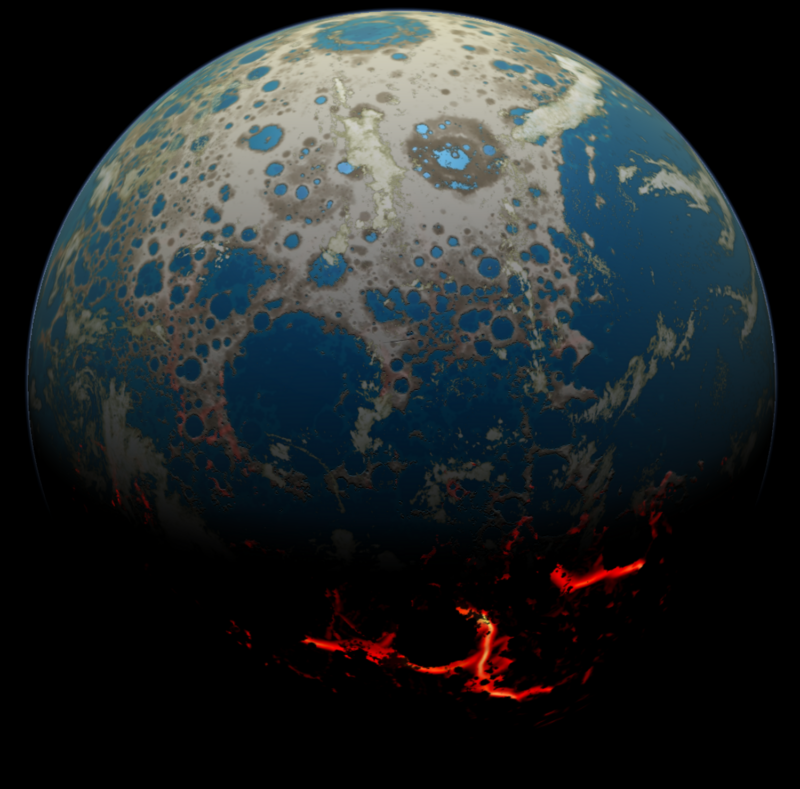One of Earth's defining features is its plate tectonics, a phenomenon that shapes the planet's surface and creates some of its most catastrophic events, like earthquakes, tsunamis, and volcanic eruptions. While some features of plate tectonics have been spotted elsewhere in the Solar System, the Earth is the only planet we know of with the full suite of processes involved in this phenomenon. And all indications are that it started very early in our planet's history.
So what started it? Currently, two leading ideas are difficult to distinguish based on our limited evidence of the early Earth. A new study of a piece of Australia, however, argues strongly for one of them: the heavy impacts that also occurred early in the planet's history.
Options and impacts
Shortly after the Earth formed, its crust would have been composed of a relatively even layer of solid rock that acted as a lid over the still-molten mantle below. Above that, there was likely a global ocean since plate tectonics wasn't building mountains yet. Somehow, this situation was transformed into what we see now: The large regions of moving, buoyant crust of the continental plates and the constantly spreading deep ocean crust formed from mantle materials, all driven by the heat-induced motion of material through the mantle.
The primary explanation for the origin of plate tectonics is to simply assume that mantle circulation was also what triggered the phenomenon's onset. Eruptions over mantle hotspots would bring less dense material to the surface, with the added weight forcing more dense material down into the mantle. As these processes continued, more buoyant material would be brought to the surface over time, expanding some areas into nascent plates. This explanation has the advantage of showing the process starting with the same factors that drive it today—scientists tend to hate having to rely on multiple, distinct explanations.
But they also hate coincidences, and a coincidence is what's behind an alternative explanation. The earliest indications of plate tectonics appeared about 3.8 billion years ago, not too long after the Earth's formation. That period also overlaps with a series of large impacts, called the Late Heavy Bombardment, that struck the bodies of the Solar System.
These impacts would have delivered a lot of energy to the crust, both fragmenting it and causing local melting. This would allow hot material from both the melted crust and the mantle to break through to the surface through volcanism. The effect is a bit like eruptions above a hotspot, with lower density materials being brought to the surface, but it would happen at multiple locations across the planet over hundreds of millions of years.
Because of the similarities between the two theories and the fact that a lot of evidence has been destroyed over the last several billion years, it's difficult to determine which is better supported by the evidence. But researchers in a new paper claim they have found evidence that impacts were likely to be critical.
Starting with a bang
The work relies on zircon crystals, extremely stable structures that include the oldest confirmed pieces of Earth. The authors focused on crystals originating in a part of Australia called the Pilbara Craton. Cratons are the oldest, most stable pieces of continental crust, and they tend to form the cores of modern-day continents. Pilbara is one of the two oldest known cratons on Earth.
The researchers screened the zircons for indications that they had been modified by geological processes after their formation, eliminating those from further analysis. And they also obtained dates for all the crystals based on uranium decay. They then focused on two things that tell us something about the environment the crystals formed in. The first involved looking at the type of rock that the crystals were embedded in, which was assumed to reflect the environment they formed in. The second was the fraction of oxygen that was from a specific isotope (18O). This analysis provides some indication of the temperature that the crystal formed at, which is generally related to its depth.




3175x175(CURRENT).thumb.jpg.b05acc060982b36f5891ba728e6d953c.jpg)

Recommended Comments
There are no comments to display.
Join the conversation
You can post now and register later. If you have an account, sign in now to post with your account.
Note: Your post will require moderator approval before it will be visible.